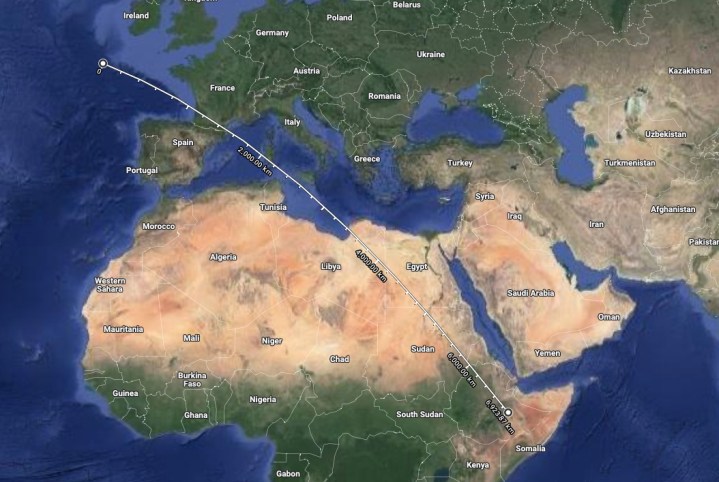An astronaut aboard the International Space Station (ISS) has shared a rarely seen view from the orbiting outpost that shows our planet from horizon to horizon.
The video, captured by Italian astronaut Samantha Cristoforetti, was made possible by recording Earth through a fish-eye lens. Covering a distance of about 4,300 miles, the video (below) starts just south of Ireland before passing over France, the Mediterranean islands of Sardinia and Sicily, the Nile, and the Red Sea before reaching the Horn of Africa.

“Fly with me! From Ireland to the Horn of Africa through a fisheye lens,” Cristoforetti wrote in a tweet accompanying the video. “It distorts the geometry a bit, but it allows me to show you the almost entire view we have from Space Station, from horizon to horizon!”
Fly with me! From Ireland to the Horn of Africa through a fisheye lens – it distorts the geometry a bit, but it allows me to show you the almost entire view we have from Space Station, from horizon to horizon! #MissionMinerva @Space_Station @esa pic.twitter.com/ORKUNYouKQ
— Samantha Cristoforetti (@AstroSamantha) August 31, 2022
Cristoforetti has been keeping her one million Twitter followers up to date with her space station activities since reaching orbit five months ago. Besides offering advice to wannabe astronauts, past posts have also included a gorgeous view of a moonlit Earth, a lunar eclipse from space, a time lapse showing how the sun sometimes doesn’t set for astronauts on the station, and, just last week, an investigation into a strange bright light that she spotted on Earth.
Cristoforetti even took time out to recreate a moment from the hit 2013 space movie Gravity.
The International Space Station has been in operation for two decades and orbits Earth at an altitude of about 250 miles. For more on how visiting astronauts live and work aboard the space-based laboratory, check out these videos made by various crews over the years.
Editors' Recommendations
- Junk from the ISS fell on a house in the U.S., NASA confirms
- Around-the-clock 4K Earth imagery to be streamed from ISS
- Amazing Earth photos shared by outgoing ISS astronaut
- Astronaut captures stunning images of a snowy Grand Canyon
- Thunderstorm from space captured in dramatic video from ISS


